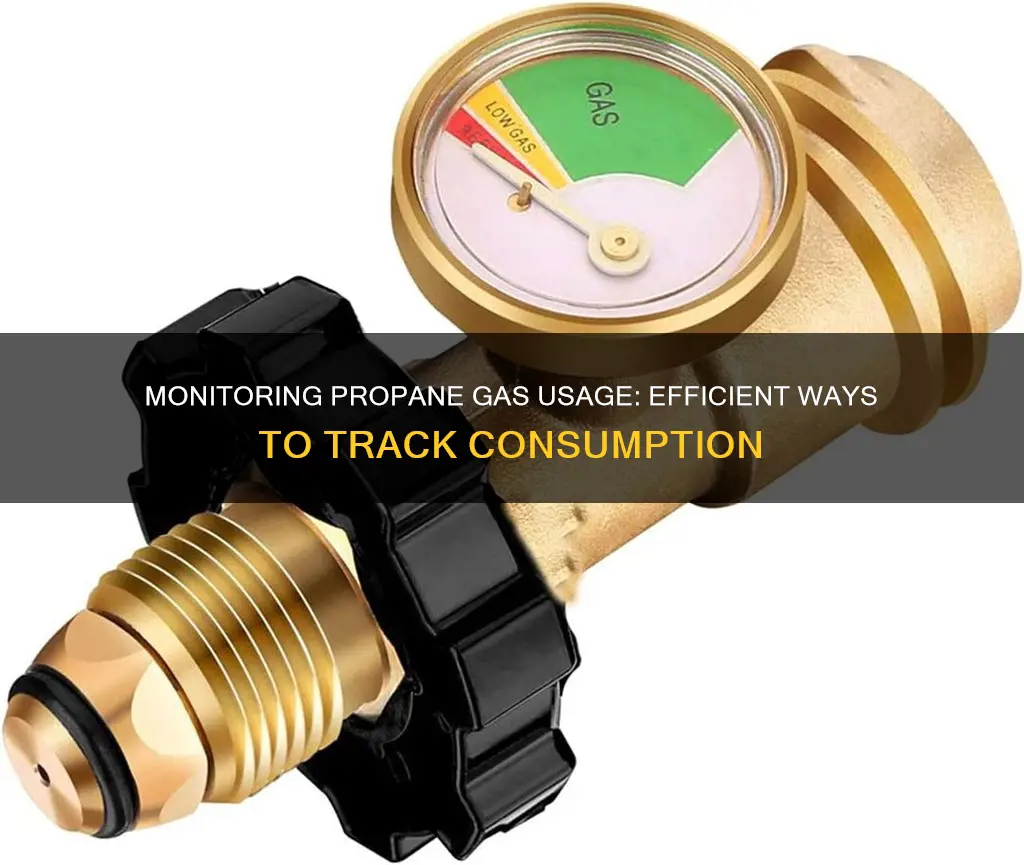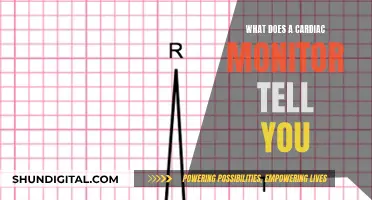
Propane is a clean-burning and inexpensive energy source for homes. It can be used for various purposes, from furnaces to stoves to fireplaces. While propane is generally safe, it is still recommended to invest in safety devices like carbon monoxide and combustible gas detectors for added protection and peace of mind. Monitoring propane usage is essential for budgeting and ensuring a consistent supply, especially during winter when consumption increases. Propane monitoring systems provide real-time data on propane levels, allowing users to track monthly usage, predict refills, and schedule deliveries accordingly. These systems offer convenience by eliminating the need to manually check tank gauges, especially in cold weather. Additionally, users can access propane level information remotely, even while travelling, providing the ability to request refills from anywhere. For those with technical inclinations, DIY solutions for monitoring propane usage are also available, involving the installation of electronic flowmeters, sensors, and custom scripts.
| Characteristics | Values |
|---|---|
| Propane Usage Monitoring Methods | Propane Monitoring System, Combustible Gas Detector, Carbon Monoxide Detector, Tank Utility Monitor, Furnace Runtime Calculation, Manual Tank Gauge Check |
| Propane Monitoring System Benefits | Real-time propane levels, ability to check levels remotely, budget management, predictable refill schedule, peace of mind |
| Combustible Gas Detector Benefits | Detects presence of combustible, flammable, toxic, and oxygen-depleting gases; provides additional safety layer; sounds alarm if gas concentration is too high |
| Carbon Monoxide Detector | Pairs well with a combustible gas detector for added safety |
| Tank Utility Monitor | Integrates with Home Assistant and provides wireless fuel level monitoring |
| Furnace Runtime Calculation | Can be used to calculate fuel usage |
| Manual Tank Gauge Check | Requires physical inspection of the tank gauge, which is usually located on top of the tank under a lid or hood |
| Propane Usage Factors | Number of people in the household, frequency of appliance use, efficiency of the house |
| Propane Appliances | Furnace, stove, fireplace, water heater, clothes dryer, generators |
| Propane Usage Estimates | Furnaces: 441-888 gallons annually; Water Heaters: 5 gallons/month/person; Stove/Dryer: 3-5 gallons/month; Generators: 2-3 gallons/hour; Fireplaces: 1-3 gallons/hour |
| Propane Cost | Average yearly cost for homes using propane for heating and appliances: $2000-$3000 |
What You'll Learn

Propane monitoring systems
Propane is a clean-burning and inexpensive fuel option for homes. It can be used for various purposes, from furnaces to stoves to fireplaces. However, monitoring propane usage can be challenging, especially with the increased use of appliances while working from home. A propane monitoring system can help users keep track of their propane usage and levels in real time.
A propane monitoring system provides real-time data on propane levels via an online app, offering a more advanced tracking method than manually checking a standard propane tank gauge. This system allows users to access propane level information from anywhere with an internet connection, even while travelling. It helps with budgeting by enabling users to schedule deliveries according to their monthly usage and predict when refills are needed, thus avoiding the need for emergency refills and their associated surprise fees.
Additionally, propane monitoring systems can be paired with automatic propane delivery. If propane usage is higher than expected, the system will alert the provider when the tank reaches low volumes, ensuring a continuous supply of propane.
For those with technical expertise, it is possible to build a DIY propane tank level monitor using an ESP and a Hall Effect Sensor. This involves measuring the voltage at 0% and 100% to determine the percentage full. Alternatively, users can install an electronic propane flowmeter on the propane feed line, accessible in the basement, and integrate it with a home automation system.
Propane usage can also be monitored through a convenient online account management tool, where users can order propane, pay bills, and view estimated tank levels and days remaining. This estimate is based on factors such as delivery history and temperature.
Furthermore, combustible gas detectors can be installed to provide an additional layer of safety by detecting the presence of combustible, flammable, toxic, and oxygen-depleting gases in the home. These detectors use various sensors to measure gas concentration and sound an alarm if levels are too high.
Electricity Usage: Monitored by Companies or Not?
You may want to see also

Manually checking tank gauges
Manually checking your propane tank gauges is a straightforward process, but it requires vigilance and a bit of arithmetic. Here's a comprehensive guide:
Locating the Tank Gauge
Your propane tank gauge is usually located at the top of the tank, under a lid or hood that can be lifted to view the gauge. It will resemble a speedometer or a car's fuel gauge, with a dial and a needle.
Understanding the Gauge
The gauge will have numbers ranging from 5 to 95, or 0 to 100, indicating the percentage of how full your tank is, not the number of gallons left in the tank. Propane tanks are designed to be filled to a maximum of 80% capacity to allow room for gas expansion with temperature changes.
Reading the Gauge
If you have a traditional dial gauge, observe the position of the needle on the dial. As the needle moves closer to 0, it's time to consider a refill. If it's in the red zone, you need to fill up soon.
Digital gauges offer a more precise reading, showing the exact percentage of propane remaining.
Knowing When to Refill
It is recommended to refill your tank when the gauge reads 20% or below as a precaution. If your gauge reads 30% or lower, it's time to schedule a delivery to ensure you don't run out.
Calculating Propane Amount
To determine the amount of propane (in gallons) in your tank, multiply the tank's capacity by the reading on the tank gauge. For example, if you have a 500-gallon tank at 60%, you have 300 gallons of propane left (500 x 0.60 = 300).
Estimating Propane Usage
To estimate how long your propane will last, you can calculate the burn time based on the British Thermal Unit (BTU) rating of your appliances. One gallon of propane contains roughly 92,000 BTUs. Divide the BTUs of one gallon of propane by the BTU rating of your appliance to get the number of hours one gallon will last.
For instance, a gas range stove with a 65,000 BTU/hour rating:
92,000 BTUs / 65,000 BTU per hour = 1.41 hours
So, one gallon of propane will last about 1 hour and 25 minutes on a gas range stove.
Additional Tips
- Keep a record of your propane levels each time you check the gauge to track usage and estimate refill times.
- Consider a propane tank monitor for remote monitoring via a smartphone app.
- Familiarize yourself with the average usage of your propane appliances to better understand your consumption rate.
- Regularly checking your tank gauge can help you identify potential leaks or issues. If the level drops suddenly when appliances are not in use, it could indicate a leak.
- If your gauge reads empty, double-check for a malfunction, then turn off all propane appliances and valves, and contact your supplier for a refill.
- Have a backup plan, like an extra propane tank or an alternative heating source, for emergencies.
Monitoring Wattage Usage: Total Control Over Energy Consumption
You may want to see also

Carbon monoxide detectors
Carbon monoxide is a colourless, odourless, and tasteless poisonous gas that can be fatal when inhaled. It is often referred to as the silent killer. Likewise, propane gas is commonly used for cooking, heating, and water heating, and while rare, leaks can occur inside the home, increasing the risk of fire or explosion.
- Types of Detectors: Carbon monoxide detectors can be plug-in or battery-operated. Plug-in detectors are powered by a standard electrical outlet and often include a battery backup for power outages. Battery-operated detectors are typically portable and ideal for use in multiple locations.
- Sensor Technology: Look for detectors that use advanced electrochemical sensors to accurately detect carbon monoxide and propane gas leaks. Some detectors may also use infrared or semiconductor sensors.
- Alarms and Alerts: Choose a detector with a loud, unmistakable alarm that alerts you when carbon monoxide or propane gas levels are too high. Some detectors may have different alarm patterns or visual alerts for each gas.
- Digital Display: A digital display can show real-time readings of carbon monoxide and propane levels, allowing you to monitor the environment continuously. Look for a display that shows both current and peak levels.
- Ease of Installation: Opt for detectors that are easy to install and come with clear instructions. Some detectors can be plugged into standard outlets, while others may require mounting hardware.
- Battery Life: Consider the battery life and replacement requirements of the detector. Some detectors have sealed lithium batteries that last for several years, while others may require more frequent replacements.
- Certification and Standards: Ensure your detector meets relevant safety standards and is certified by recognised organisations, such as Underwriter Laboratories of Canada (ULC) or UL.
- Additional Features: Some detectors offer remote false alarm silencing, low battery indicators, and end-of-life timers that notify you when it's time to replace the device.
- Kidde Nighthawk Carbon Monoxide and Explosive Gas Alarm: This detector has a digital display, an 85-decibel alarm, and a peak level memory feature. It plugs into a standard outlet and includes a 9-volt battery backup.
- First Alert Combination Explosive Gas and Carbon Monoxide Alarm: Featuring a backlit digital display and an 85-decibel alarm, this detector can be plugged into any AC outlet. It also has a 9-volt battery backup and a single-button control for testing and silencing.
- RV Safe Gas Detecting Alarm: Designed for recreational vehicles, this alarm meets or exceeds UL2034 and UL484 requirements for carbon monoxide and propane gas detection. It has a sleek, low-profile design and uses advanced electrochemical sensors to minimise false alarms.
Internet Privacy: Government Surveillance and Online Monitoring
You may want to see also

Combustible gas detectors
These devices use infrared point sensors, ultrasonic sensors, electrochemical sensors, or semiconductor sensors to detect gas leaks. Through these sensors, a combustible gas detector will measure the concentration of gas in a specific area. If the concentration of gas is too high, the detector will sound an alarm.
Propane is designed to be easy to detect for leaks. Propane manufacturers add a chemical to propane that gives it a strong, pungent smell, similar to the scent of rotten eggs. However, if there are people in your household who may have difficulty smelling propane, or if your propane appliances are located in an area of your house that isn't frequently used, then a combustible gas detector can be especially useful.
When purchasing a combustible gas detector, it is recommended to look for one that combines carbon monoxide and propane leak detection. It is also important to choose a detector that is approved by Underwriter Laboratories of Canada (ULC).
- Kidde Nighthawk Plug-in Carbon Monoxide and Explosive Gas Detector
- EG Air Propane and Natural Gas Detector
- GasKnight Natural Gas Detector & Propane Detector
- MTI Industries Safe T Alert 35-742-BL Dual LP/CO Battery-Powered Alarm
Monitoring Internet Usage: Netgear Router Settings Guide
You may want to see also

Calculating appliance usage
Propane gas is an inexpensive and clean-burning option for heating your home. You can use propane for various purposes, from powering your furnace to your stove and fireplace. However, calculating your propane usage can be challenging, especially if you're working from home and using appliances more frequently. Here are some guidelines to help you estimate your propane appliance usage:
Propane Gas Furnace:
Most homes operate their furnaces for 4 to 6 months a year. The annual propane usage for a furnace will depend on the efficiency of your house and the duration of use. On average, a 2,000-square-foot home using a furnace for 4-6 months will consume approximately 888 gallons of propane annually.
Propane Water Heater:
A baseline of 5 gallons of propane per month is required to keep a water heater running. Additionally, you can expect to use approximately 5 gallons per person per month. For example, a household of four will use around 25 gallons per month.
Gas Stove and Gas Dryer:
Gas stove tops and gas clothes dryers typically consume 3 to 5 gallons of propane per month, depending on the frequency of use. If you use propane for whole-house heating, opting for propane for cooking and laundry can be an efficient choice.
Propane Generators and Fireplaces:
Measuring propane usage for generators and fireplaces is challenging due to the lack of standardised usage patterns. Propane generators generally use 2 to 3 gallons of propane per hour, while fireplaces consume 1 to 3 gallons per hour.
Propane Usage Based on Household Square Footage:
Propane usage can also be estimated based on the square footage of your home. Here are some approximate annual usage figures:
- 1,000 square feet: 440 gallons
- 1,500 square feet: 670 gallons
- 2,000 square feet: Up to 900 gallons
- 3,000 square feet or more: 1,300+ gallons
Monitoring Propane Usage:
To make monitoring easier, consider investing in a propane monitoring system. These systems provide real-time propane levels via an online app, allowing you to track your monthly usage and budget accordingly. With a monitoring system, you can schedule deliveries, predict refills, and check your levels remotely while on vacation or away from home.
Monitoring Memory Usage in Embedded Linux: Practical Tips
You may want to see also
Frequently asked questions
You can monitor your propane gas usage through a propane monitoring system, which shows real-time propane levels via an online app.
The cost of a propane monitoring system varies depending on the provider and the features included. Some systems may be available for a one-time purchase, while others may require a subscription fee.
A propane monitoring system allows you to check your propane levels from anywhere, schedule deliveries based on your usage, and budget for your propane expenses. You can also set alerts to notify you when your tank reaches a certain level.
The installation process may vary depending on the type of system you choose. Some systems may require professional installation, especially if you have an underground tank. It is recommended to consult with a qualified technician or your propane provider to ensure proper installation.
Yes, there are alternative methods to monitor your propane gas usage. You can manually check the tank gauge, which is usually located on top of the tank under a lid or hood. Additionally, some propane suppliers offer wireless fuel level monitoring options or online portals to access usage data.







